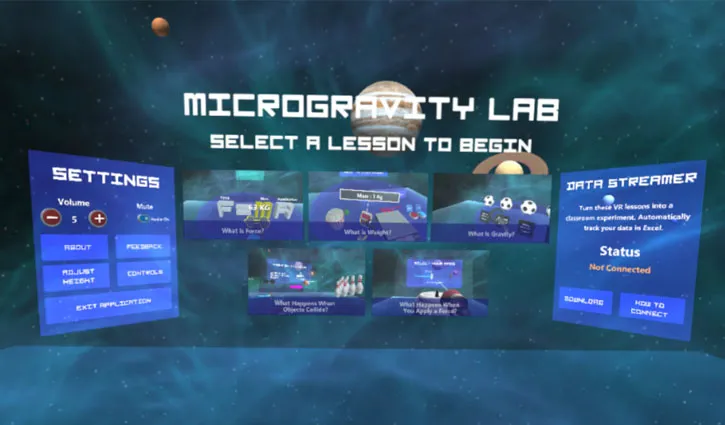A new Microsoft Garage project, Microgravity Lab, presents teachers with a new and interactive way to teach middle school students about complex physics concepts in microgravity.
The experience will allow students to explore physics principles, including conservation of momentum and Newton’s 2nd and 3rd law, through the context of microgravity on the moon. Microgravity is a concept that is hard to explain and simulate on earth, and therefore easier to teach through a platform like VR.
The Microgravity Lab was developed by a Microsoft intern team in Vancouver, in collaboration with NASA. It simulates the conditions experienced by astronauts while in space, making it easier for students to understand these complex physics concepts.
“The concept of microgravity is often misunderstood by students who learn about astronauts on the International Space Station,” said Matthew E. Wallace, an education specialist for NASA. “Providing a virtual reality world for them to explore the phenomena of life on orbit is an excellent way to engage students and solidify their comprehension of concepts related to force, mass and gravitational acceleration.”
The experience is part of a wider collaboration between NASA and Microsoft that features to a collection of middle school lesson plans.
Teachers that are interested in using the Microgravity Lab in their classroom can request an invite through Microsoft. There’s also an extensive lesson plan that goes along with the experience, which takes place across four, 50-minute classes.
You can read more about the development of the experience in this Microsoft Garage blog post.





























